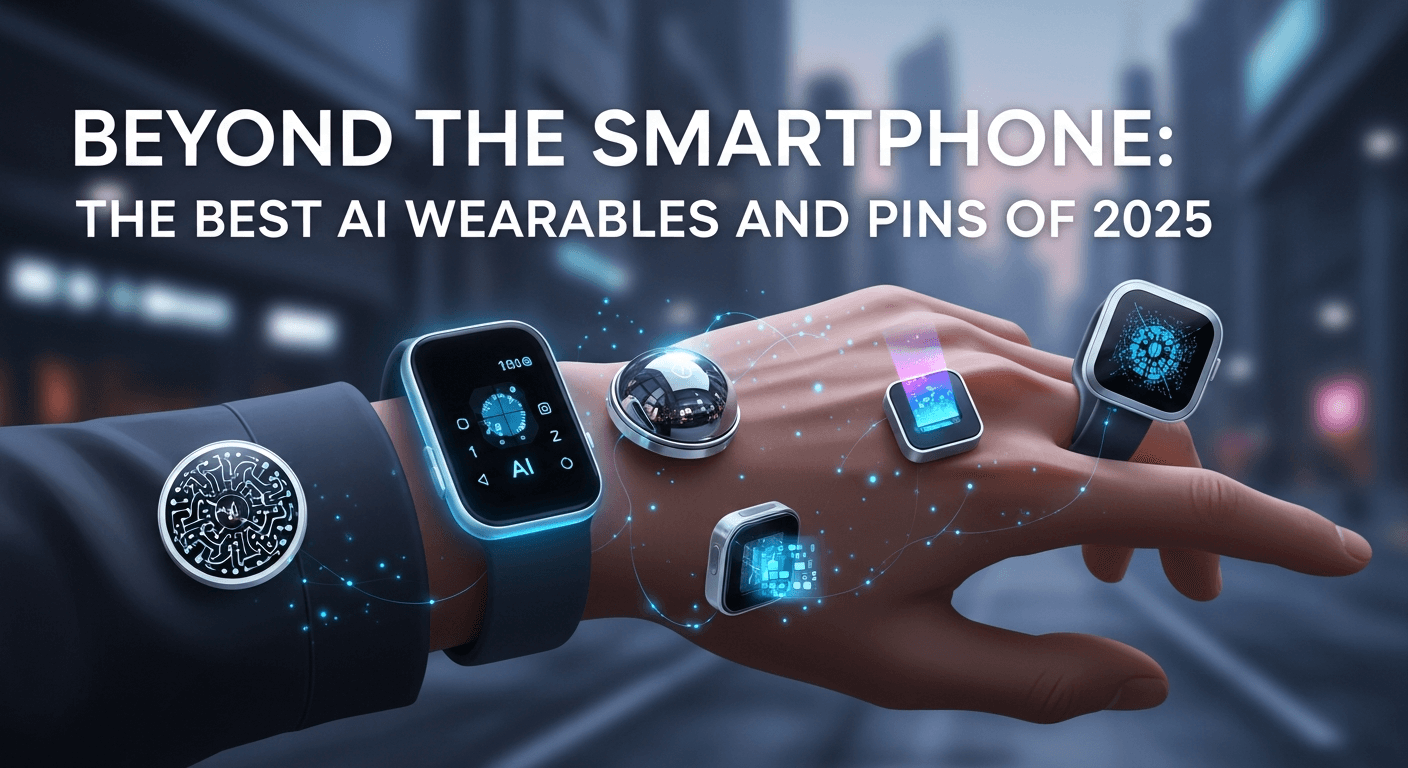Beyond the Smartphone: The Best AI Wearables and Pins of 2025

The smartphone era is evolving. While these pocket-sized computers have revolutionized communication, productivity, and entertainment, a new frontier is emerging: AI-powered wearables and pins. In 2025, these discreet devices are taking center stage, offering seamless AI assistance without the need to constantly glance at a screen. From smart glasses that process your surroundings to lapel pins that act as personal AI assistants, we’re witnessing a paradigm shift toward more intuitive, hands-free technology. This article explores the standout AI wearables and pins defining this year, their capabilities, and why they represent the future of human-AI interaction.
Why 2025 Marks the Tipping Point for AI Wearables
For years, wearables like fitness trackers and smartwatches focused on health metrics and notifications. But 2025 is different. Advances in miniaturization, neural processing, and natural language understanding have enabled devices to run sophisticated AI locally. This shift eliminates lag, reduces dependency on cloud processing, and enhances privacy. Coupled with intuitive interfaces—voice commands, subtle haptics, and even thought-controlled interactions—these wearables are becoming indispensable tools. As our relationship with digital assistants deepens, smartphones are no longer the sole gateway to AI. Instead, wearables and pins are becoming extensions of our consciousness, anticipating needs and automating tasks unobtrusively.
The Decline of the Smartphone Dominance
Smartphones remain powerful, but their limitations are glaring. Constant screen time strains eyes and attention spans, while bulky designs can feel cumbersome during activities like cycling or cooking. AI wearables address these pain points by integrating technology into daily life without disruption. They offer contextual awareness—understanding your environment, preferences, and routines—to provide hyper-relevant assistance. Whether it’s translating a conversation in real-time or alerting you to allergens in your food, these devices are becoming proactive rather than reactive. For insights into how AI wearables are transforming healthcare, see How AI Wearables Are Changing Healthcare.
Top AI Wearable Devices of 2025
The market is saturated with options, but a few stand out for their innovation and practicality. Here are the best AI wearables leading the charge:
- Neural Glasses Pro: These lightweight glasses feature bone-conduction audio, micro-OLED displays, and on-device AI for real-time captioning, object recognition, and navigation. Their 12-hour battery life and waterproof design make them ideal for daily use.
- Aura Ring 2: Building on its predecessor, the Aura Ring now tracks sleep patterns, stress levels, and even predicts health anomalies using tiny sensors. Its AI coach offers personalized wellness tips via a companion app.
- Tactile Smartwatch: This haptic-focused device uses vibrations to convey information silently. It syncs with your calendar and provides AI-driven meeting summaries, freeing you from screen distractions.
For a deeper dive into 2024’s top wearable AI assistants, which paved the way for 2025’s innovations, explore Top 5 Wearable AI Assistants in 2024.
The Rise of AI-Powered Pins
Pins are the newest category, blending fashion with functionality. Unlike wearables, these discreet lapel or badge-sized devices require no screens. Instead, they use voice, gestures, or neural interfaces to interact with AI. Here are the frontrunners:
- PinPoint AI Badge: A stylish pin that doubles as a virtual assistant. Ask questions, set reminders, or control smart home devices with voice commands. It uses ultra-low-power Bluetooth and offers a week of battery life.
- Nexus Clip: This magnetic pin attaches to clothing and focuses on productivity. It transcribes meetings, summarizes emails, and prioritizes tasks using generative AI. Its minimalist design ensures it complements any outfit.
For more on how pins are heralding a new era, read The Future of Smart Pins: A New Era of AI.
Key Features to Look For in AI Wearables and Pins
Not all devices are created equal. When choosing an AI wearable or pin, prioritize these features:
- On-Device Processing: Ensures faster responses and better privacy by keeping data local.
- Battery Life: Aim for at least 8–12 hours of continuous use, especially for AI-heavy tasks.
- Comfort and Design: The best devices are lightweight, durable, and aesthetically pleasing.
- AI Capabilities: Look for contextual awareness, multilingual support, and task automation.
- Ecosystem Integration: Compatibility with your existing apps and devices enhances utility.
The Future: Where Do We Go From Here?
As AI wearables and pins mature, expect even more radical innovations. Neural interfaces may soon enable thought-controlled interactions, while biometric sensors could provide real-time mental health feedback. These devices will become gateways to the metaverse, offering immersive AR experiences without clunky headsets. For a broader perspective on how AI is reshaping wearables, see The Evolution of AI in Wearable Technology.
Ultimately, 2025 is just the beginning. By freeing us from screens and embracing seamless integration, AI wearables and pins are redefining our relationship with technology. They’re not just accessories—they’re personal companions designed to enhance every facet of life, one intelligent interaction at a time.
Frequently Asked Questions
Are AI wearables better than smartphones?
AI wearables excel in hands-free use, health tracking, and contextual awareness, making them ideal for specific tasks. However, smartphones still offer superior multitasking and processing power for complex operations. The best choice depends on your needs—wearables complement, rather than replace, smartphones.
How long do AI wearables’ batteries last?
Battery life varies by device. Most high-end AI wearables last 8–12 hours with active AI use, while pins can often go 5–7 days. Advances in energy-efficient chips may extend this in future models.
Are AI pins secure?
Leading pins employ encryption, voice authentication, and on-device processing to protect data. However, always review privacy settings and avoid sharing sensitive information through unsecured networks.
Can AI wearables replace fitness trackers?
Yes, many AI wearables now include advanced health metrics like ECG, sleep analysis, and stress monitoring, making them more comprehensive than traditional fitness trackers.
Will AI wearables work offline?
Most core AI functions (e.g., health tracking, basic voice commands) work offline. However, cloud-synced features like real-time translations or app integrations require an internet connection.
Related Tags
Enjoyed this question?
Check out more content on our blog or follow us on social media.
Browse more articles